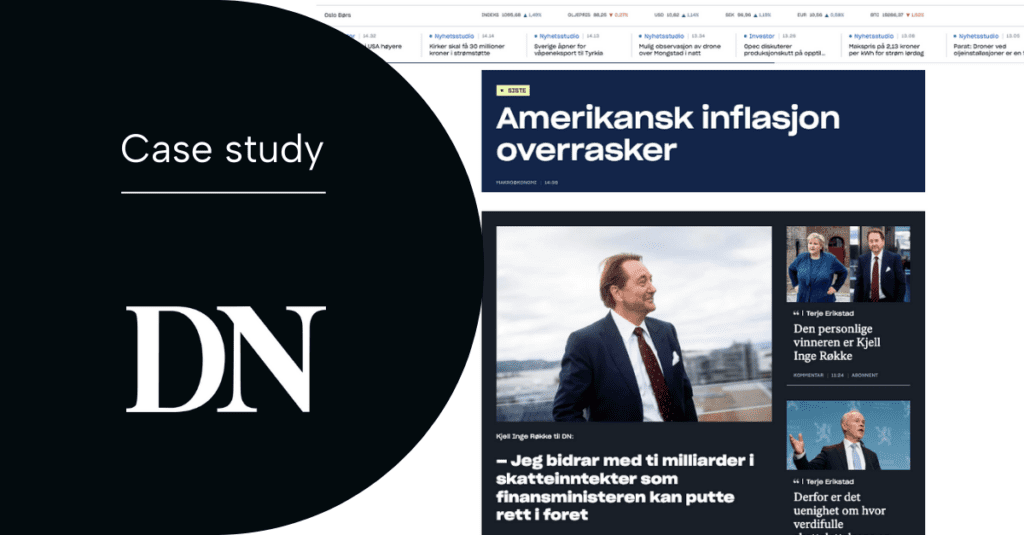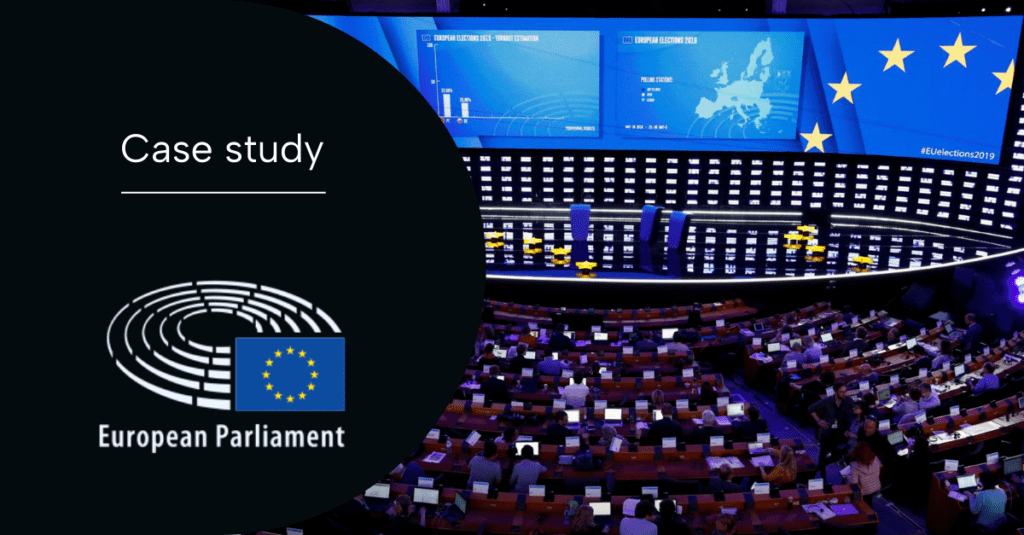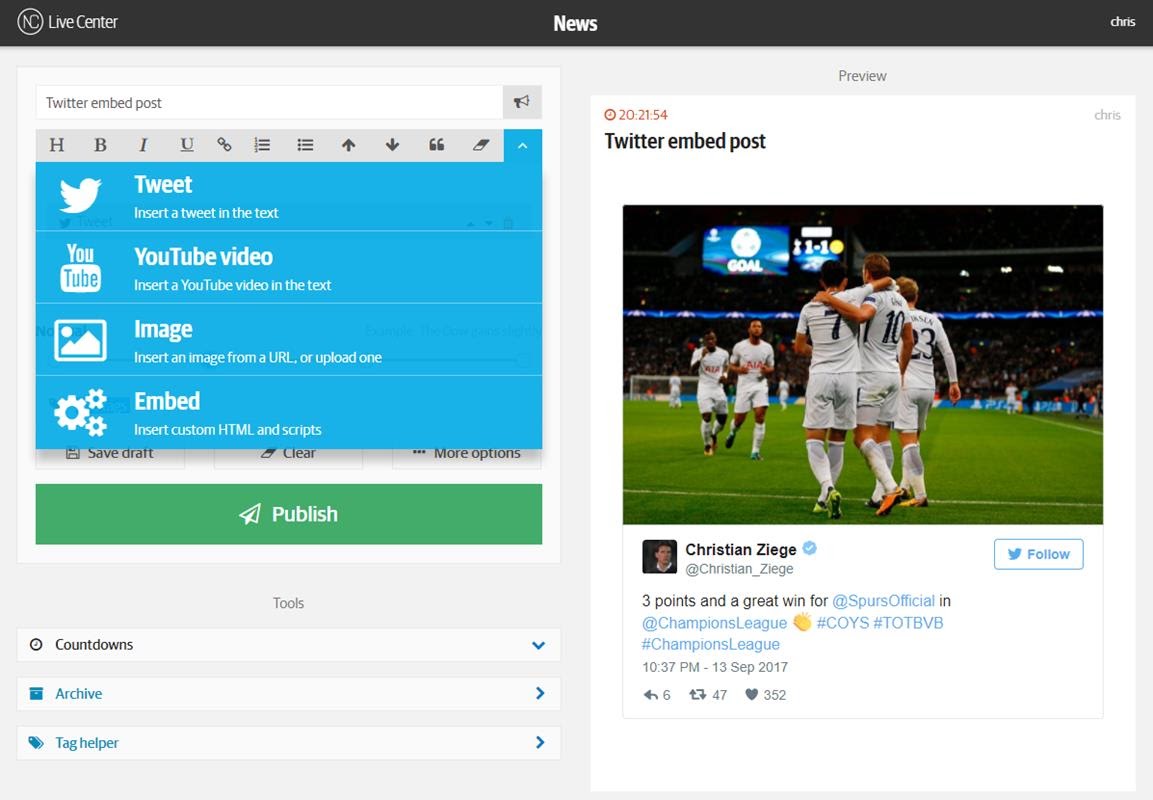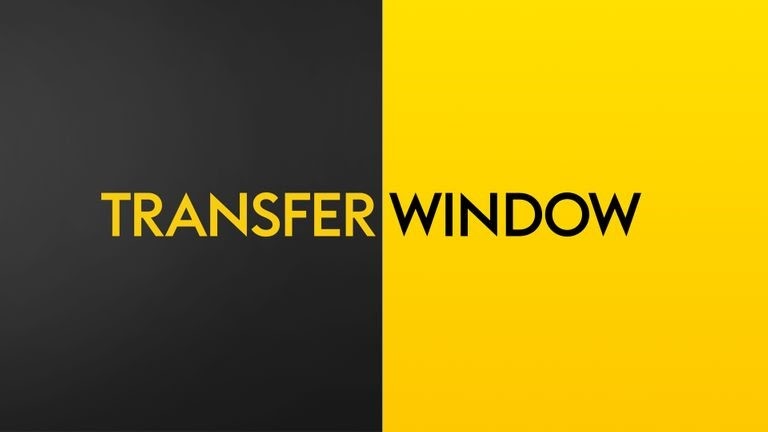How to select a live publishing software for your newspaper? In-house vs. convenience vs. expertise

This post is also available in:
English
Today more than ever, businesses attempt to remain agile and constantly seek modern solutions that are cost-efficient and highly effective. Like any other business, newspapers aren’t married to technology and need to stay flexible enough to switch out one system for another – whether the purpose is to cut costs, do more with fewer resources or update their solutions according to the latest technological trends.
Choosing the right solution can be a daunting task, whether a news organization already has extensive experience with a live-publishing or live-blogging platform or is just getting started with it.
What are the options for publishing platforms?
As with most software, there are three main routes a news company can go for:
- Developing a solution in-house
- Source a solution from a one-stop-shop vendor who offers an entire solution suite
- Source a solution from providers who are experts in their field or best-in-class vendors
In this blog post, we examine each option for live blogging or live publishing strategies and weigh the advantages and limitations that come with each approach.
For Dagens Næringsliv (DN), the leading business newspaper in Norway, a best-in-class solution such as Live Center provides a way to focus journalistic efforts on exclusive in-depth stories while continuing to publish a constant and fresh flow of breaking news and information as it happens.
 To the case study
To the case study
1. Developing an in-house solution
Developing a solution in-house puts the internal team in control and allows a solution that perfectly fits your current needs. Isn’t that ideal? But what happens to your self-built solution in 2,3, or 4 years down the line? It builds up a technical debt, meaning that at some point in the future costs will be involved to update and maintain this solution. To alleviate this technical debt, news and media companies will need to take time away from their focus and core strengths to maintain, fix bugs, and ensure compatibility with other changing pieces of their tech stack. Additionally, if the solution has to continue being a perfect fit for the company’s needs, maintenance won’t be enough – technical improvements, R&D, and scalability will have to occur in order for the business to keep up with operational requirements. In short, media companies will also need to keep up with technological innovation and market trends.
The alternative is, of course, outsourcing. This has several advantages:
- Access to expertise and skills that may not be available in-house
- Greater business efficiency and productivity by allowing a company to focus on its core business functions
- Seamlessly scale operations up or down as needed, allowing companies to adjust to changing market conditions and customer needs
- Cost-efficient as companies will avoid hiring and training processes to maintain the solution
- Tap into innovation that originates from a large number of use cases, feedback and trials. On its own, a company might only see one piece of the puzzle of where the market and trends are moving towards. However, a vendor who works with a range of customers has its ear to the rail and may respond to input and indicators from many sources.
Now that we have examined the option of in-house development, let’s have a look at external expertise.
2. One-stop-shop solutions
A “one-stop shop” is a vendor that offers a range of software solutions that cater to several needs. The main advantage of choosing a “one-stop shop” vendor is that it simplifies the procurement process and reduces the number of vendors a company needs to manage.
In many cases, however, these solutions don’t integrate well with other solutions. The main value is that all business needs are being addressed by just one solution, hence one-shop-stop vendors place less emphasis on interoperability and integrations with other solutions.
Another drawback is that this approach may lead to compromises in terms of expertise, innovation, and deep value-adding features. These holistic solutions meet many needs and solve many problems, but due to their nature of covering a certain quantity of needs, they have to compromise on some feature qualities.
3. Best-in-class solutions
A “best-in-class” vendor focuses on providing a top-notch solution for a specific function, need, or business process while focusing on integrations and interoperability. To quote a telling insight from an INMA article:
“This approach involves building a suite of tools and processes that can be mixed and matched, and possibly switched in and out with other solutions, including third parties. It’s much easier to A/B test solutions without committing to a whole new suite of tools, which is a huge upside for organisations as they can be more flexible with their integrations.” Source: Jodie Hopperton, 2023, INMA Blog
There are several advantages to selecting a best-in-class solution:
- Freedom to select the best performing solution: Selecting a best-in-breed solution will provide the very best functionality and value to specific needs.
- Integrations built to scale: A best-in-breed solution cannot survive in a tech ecosystem without being easy to integrate with other technologies utilized by a customer. Hence, companies can always rest assured that whatever solution they will purchase, seamless implementation and scalability will follow.
- Flexible configuration: A best-in-class solution brings along flexibility to test, iterate, and configure in order to deliver the best value in an organization.
- Interchangeable: Changing one best-in-class solution for another will be much easier for businesses as opposed to replacing an entire solution suite. If a one-stop-shop vendor decides to discontinue one of their modules, companies will find themselves in a challenging situation to replace that module alone, not to mention the licensing costs that will come with it for using numerous solutions.
The European Parliament turned towards Live Center in 2019 to cover the European elections in real-time.
24 unique live blogs were created, covered by 30+ editors and each customized for the official languages of European countries. Certain accessibility requirements needed to be met, which is where Live Center’s flexibility and expertise out-performed.

Read more in this case study
In conclusion, different media company needs will dictate which one of the above-mentioned approaches will be more suitable for them. While a “one-stop-shop” solution offers convenience, a “best-in-class” solution will provide specialized and advanced solutions for specific requirements and greater functionality.
If you’re looking for a top-notch live publication software that empowers editors to achieve big things, get in touch with us today!


